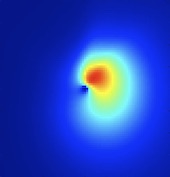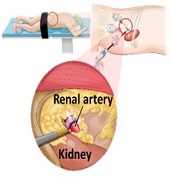Modeling of Interstitial Ultrasound Ablation for Continuous Applicator Rotation with MR Validation
https://www.embs.org/tbme/wp-content/uploads/sites/19/2021/05/TBME-01070-2020-Highlight-Image.jpeg
170
177
IEEE Transactions on Biomedical Engineering (TBME)
//www.embs.org/tbme/wp-content/uploads/sites/19/2022/06/ieee-tbme-logo2x.png
Predictive modeling can play an important role in thermal ablative cancer treatments where estimated energy deposition may integrate into pre-operative planning software or combine with closed loop control. In this work, we develop a finite element model capable of simulating continuous rotation by a directional interstitial ultrasound applicator. The developed model simulates temperature maps for different rotation trajectories. The developed simulation was validated using magnetic resonance thermal imaging and demonstrated performance suitable for real-time control of robotically actuated conformal tumor ablation.
read more


